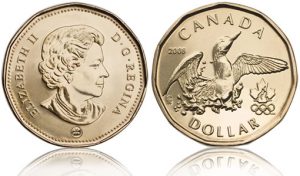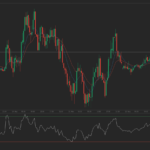 Yesterday’s trade saw USD/CAD within the range of 1.3062-1.3176. The pair closed at 1.3087, falling 0.65% on a daily basis, while marking the fourth consecutive trading day of losses. The daily low has been the lowest level since September 18th, when a low of 1.3007 was registered.
Yesterday’s trade saw USD/CAD within the range of 1.3062-1.3176. The pair closed at 1.3087, falling 0.65% on a daily basis, while marking the fourth consecutive trading day of losses. The daily low has been the lowest level since September 18th, when a low of 1.3007 was registered.
At 9:38 GMT today USD/CAD was losing 0.03% for the day to trade at 1.3079. The pair touched a daily low at 1.3066 at 5:30 GMT. It has been a test of the daily S2 level and the low from Monday.
Today the cross may be influenced by a number of macroeconomic reports as listed below.
Fundamentals
United States
Balance of Trade
The deficit on US balance of trade probably expanded to USD 45.50 billion in August, according to market expectations. In July the trade gap shrank to USD 41.86 billion, which has been the lowest since February 2015, when a deficit of USD 35.40 billion was reported.
Total exports rose 0.4% to USD 188.5 billion in July. Exports of goods rose by USD 0.6 billion to reach USD 128.2 billion, supported by sales of automotive vehicles, parts, and engines (a USD 0.6 billion increase), industrial supplies and materials (a USD 0.3 billion increase) and nonmonetary gold (a USD 0.3 billion increase). Exports of consumer goods were USD 0.4 billion lower in July.
Total imports shrank 1.1% to USD 230.4 billion in July. Imports of goods fell by USD 2.7 billion to USD 189.6 billion, supported by lower purchases of consumer goods (a USD 2.6 billion decrease), pharmaceutical preparations (a USD 1.5 billion decrease) and cell phones and other household goods (a USD 1.3 billion decrease).
US exports to China went down 1.9% in July, while imports from China shrank 0.2%. At the same time, shipments to Canada dropped 8.3%, while exports to the European Union decreased 5.3% in July.
In case the trade gap expanded more than anticipated in August, this would have a strong bearish effect on the US dollar, because of the potential negative contribution to the country’s Gross Domestic Product. The official trade data are due out at 12:30 GMT.
Canada
Balance of Trade
The deficit on Canadian balance of trade probably widened a second consecutive month in August, reaching CAD 1.17 billion, according to the median estimate by experts, following a deficit figure of CAD 0.59 billion in the preceding month.
In July total exports climbed 2.3% year-on-year to reach CAD 45.5 billion, as exports of motor vehicles and parts went up 9.9%, those of consumer goods increased 7.3%, while shipments of aircraft and other transportation equipment and parts surged 19.2%. On the other hand, exports of energy products went down 15.1% in July.
Canadas total imports grew 1.7% to CAD 46.1 billion in July, supported by increases in 8 out of 11 sections. Imports of energy products expanded 12.8%, those of aircraft and other transportation equipment and parts surged 22.9%, while purchases of electronic and electrical equipment and parts grew 4.4%, according to the report by the Statistics Canada. Imports of metal and non-metallic mineral products were 9.6% lower in July.
In case the trade balance deficit widened more than anticipated in August, the loonie would definitely see selling pressure. The official report is to be released at 12:30 GMT.
Ivey PMI
Activity among purchasing managers in Canada probably slowed down in September, with the corresponding seasonally adjusted PMI coming in at a value of 56.5. If so, September would be the sixth consecutive month, when the index inhabited the area above 50.0. In August the gauge was reported at a level of 58.0, or the highest since May 2015. This indicator is based on a survey sponsored by Richard Ivey School of Business and Canadian Purchasing Management Association. It encompasses 175 respondents in both the public and the private sector, selected in accordance with their geographic location and activity, so that the entire economy is covered. Activity among purchasing managers is closely watched by market players, as managers usually have an early access to data regarding performance of their companies, which could be used as a leading indicator of overall economic activity. Readings at the key level of 50.0 are indicative of no change in business conditions, while those above it – of optimism (expanding activity). In case, however, the PMI demonstrated a larger-than-expected slowdown, this would have a moderate-to-strong bearish effect on the Canadian dollar. The official index reading is due out at 14:00 GMT.
Bond Yield Spread
The yield on Canadian 2-year government bonds went as high as 0.559% on October 5th, or the highest level since September 25th (0.561%), after which it slid to 0.513% at the close to add 0.008 percentage point compared to October 2nd.
The yield on US 2-year government bonds climbed as high as 0.617% on October 5th, after which it fell to 0.605% at the close to add 2.4 basis points (0.024 percentage point) compared to October 2nd.
The spread between 2-year US and 2-year Canadian bond yields, which reflects the flow of funds in a short term, widened to 0.092% on October 5th from 0.076% on October 2nd. The October 5th yield difference has been the largest one since October 1st, when the spread was 0.120%.
Meanwhile, the yield on Canadian 10-year government bonds soared as high as 1.451% on October 5th, after which it closed at 1.443% to add 4 basis points (0.04 percentage point) compared to October 2nd.
The yield on US 10-year government bonds climbed as high as 2.063% on October 5th, after which it slipped to 2.051% at the close to add 6 basis points (0.06 percentage point) compared to October 2nd.
The spread between 10-year US and 10-year Canadian bond yields expanded to 0.608% on October 5th from 0.588% on October 2nd. The October 5th yield difference has been the largest one since October 1st, when the spread was 0.616%.
Daily and Weekly Pivot Levels
By employing the Camarilla calculation method, the daily pivot levels for USD/CAD are presented as follows:
R1 – 1.3097
R2 – 1.3108
R3 (range resistance) – 1.3118
R4 (range breakout) – 1.3150
S1 – 1.3077
S2 – 1.3066
S3 (range support) – 1.3056
S4 (range breakout) – 1.3024
By using the traditional method of calculation, the weekly pivot levels for USD/CAD are presented as follows:
Central Pivot Point – 1.3251
R1 – 1.3355
R2 – 1.3561
R3 – 1.3665
S1 – 1.3045
S2 – 1.2941
S3 – 1.2735





